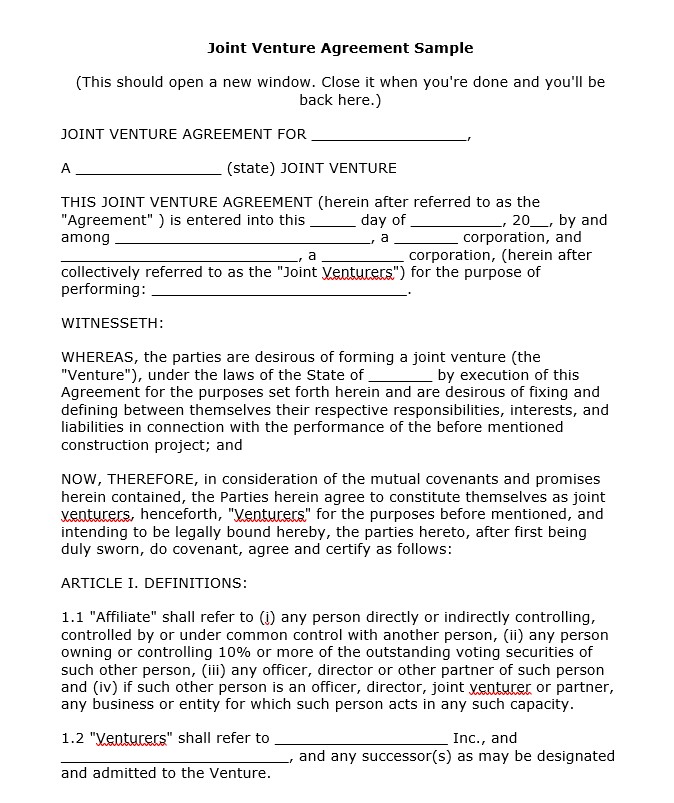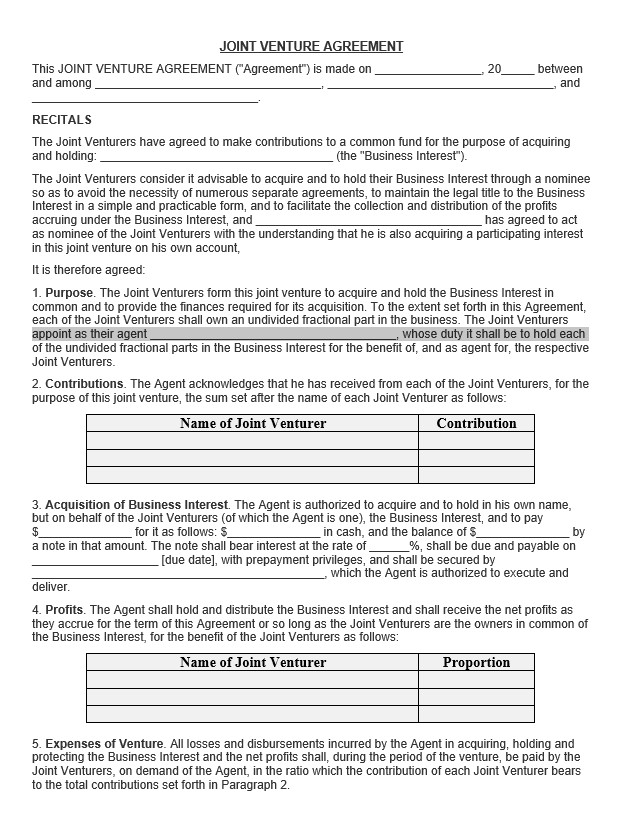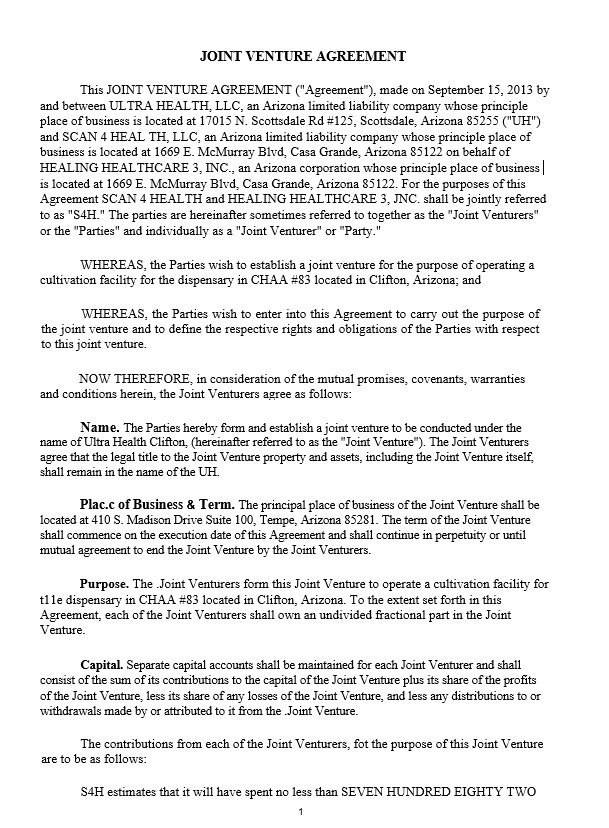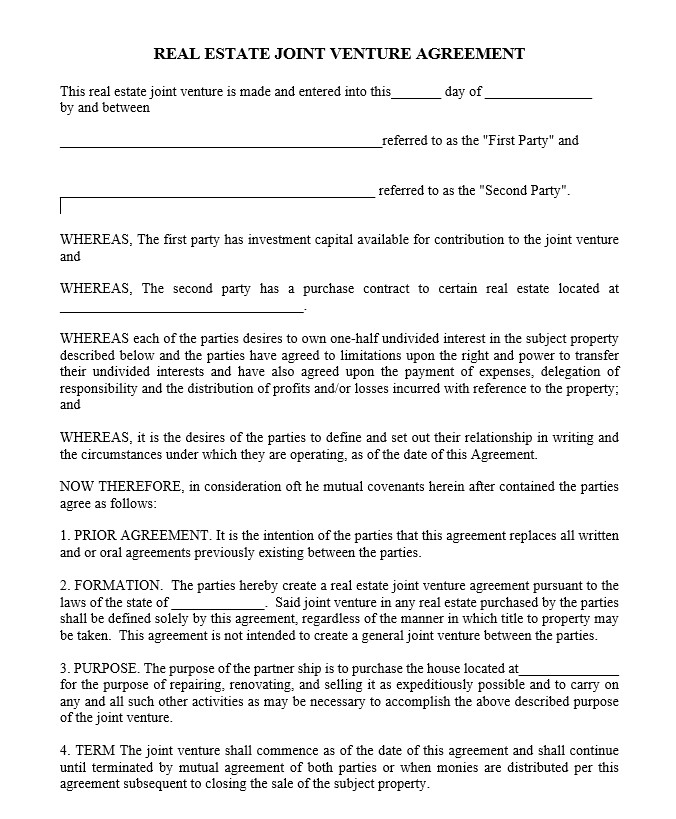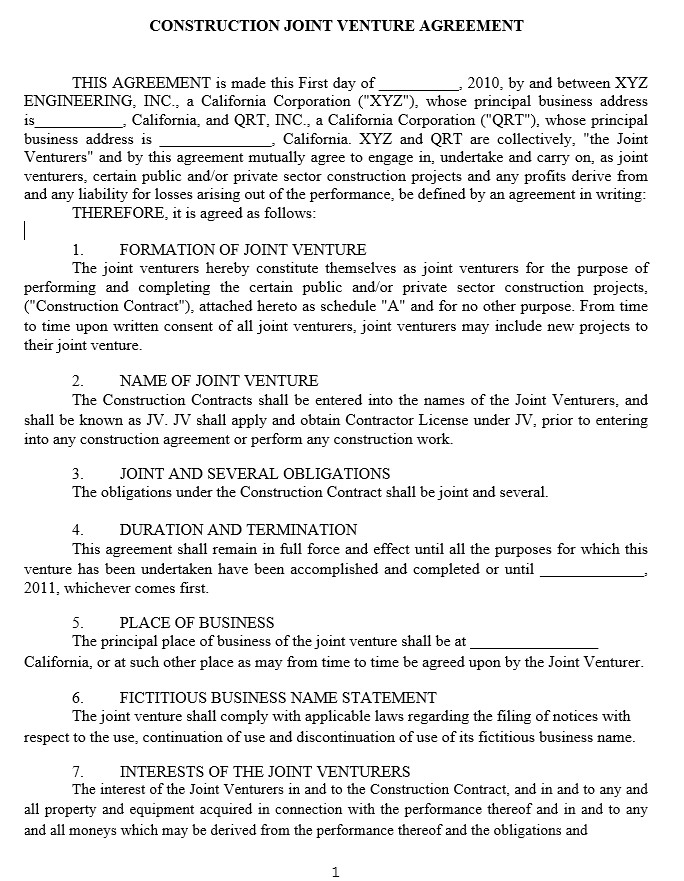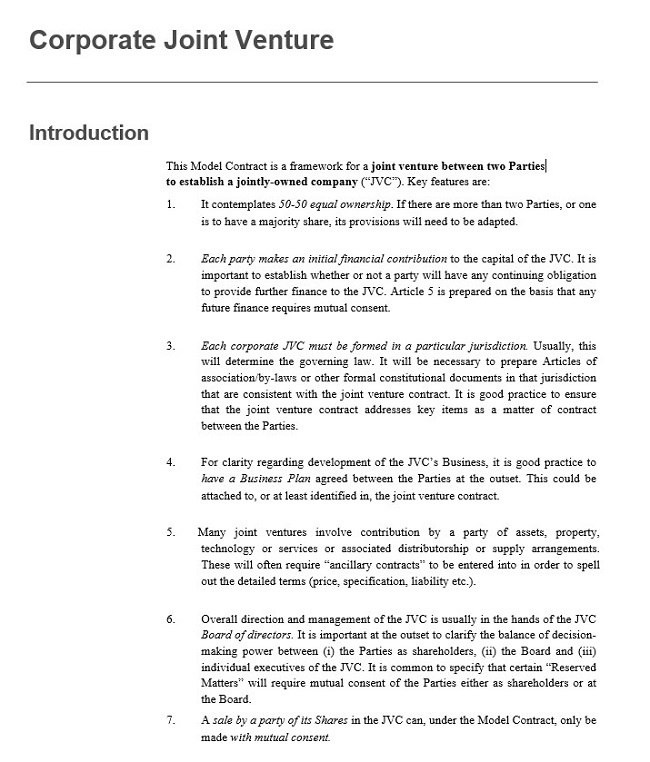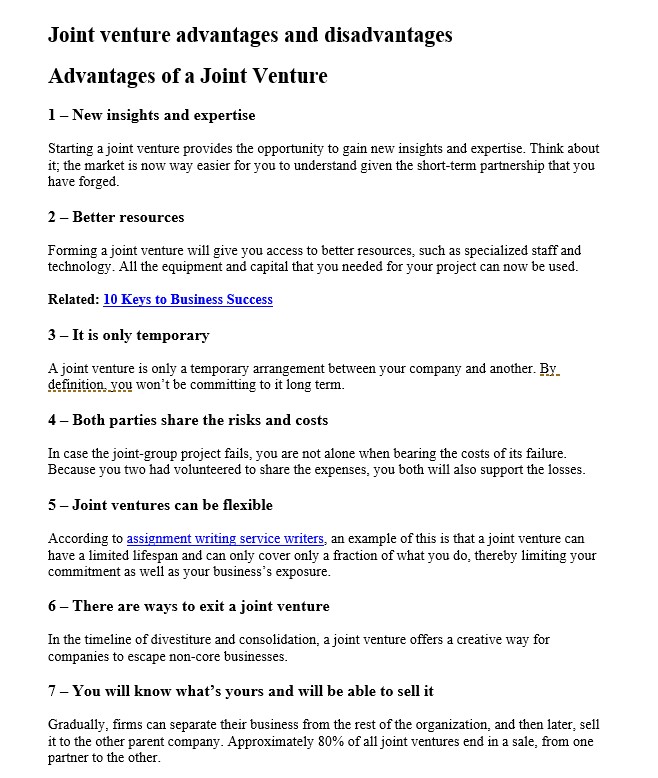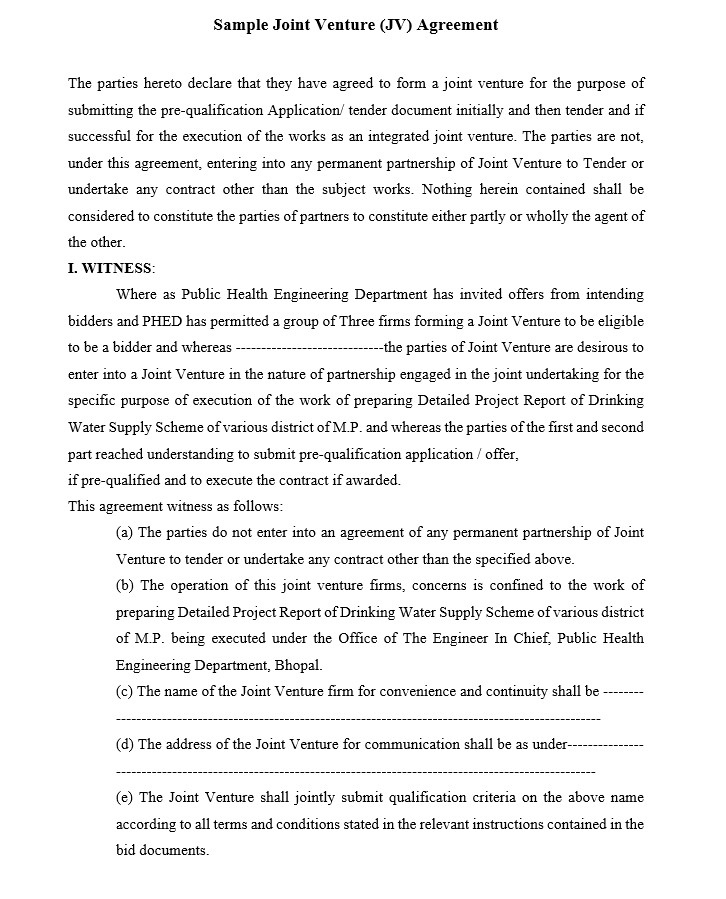Simple joint venture agreement templates: Welcome to our detailed guide on simple joint venture agreement templates! In business, two heads are often better than one. That’s why many companies opt for joint ventures. But to make sure everything is crystal clear for everyone, a joint venture agreement is essential. Let’s dig into these agreements’ importance, benefits, types, and how-to’s.
A Joint Venture Agreement is like a friendship contract for businesses. It’s a written document defining what two companies will do together. The agreement discusses who does what, how money gets shared, and what happens if things go south. It’s a way to ensure everyone’s on the same page! In business, two heads are often better than one.
Key Benefits of Having a Joint Venture Agreement
When two businesses come together for a common goal, magic can happen. But like any magic trick, you need a set plan—or, in this case, a Joint Venture Agreement. This document helps both parties know what to expect and how to act. Let’s talk about why having one is super important.
Learning and Expertise: Expand Your Skills
Joining up with another business lets you learn new tricks. You can pick up skills and knowledge from your partner that you didn’t have before. It’s like going to business school but way more fun!
Resource Sharing: Team Up to Save
Imagine if you could share tools, staff, or even office space. With a joint venture, you can! Resource sharing helps you do top-notch work without emptying your pockets.
Shared Risks: You’re Not in It Alone
Life is full of ups and downs, and so is business. The good news is if your project doesn’t go as planned, both parties share the weight. You need to be left holding the bag all by yourself.
Flexibility in Terms: Make Your Own Rules
One of the cool things about a joint venture agreement is that it’s not set in stone. You and your partner can choose your own rules and roles. That way, no one feels like they’re getting a bad deal.
Potential for Sale: Keep Your Options Open
Here’s something neat to think about sometimes: one business can buy the other one out. It is often easier to do when you have a joint venture agreement.
Scaling Smaller Businesses: Small Meets Big
Are you a small fry in a big pond? No worries! Small businesses can grow fast by teaming up with a larger company. It’s like getting a business booster shot!
Short-Term Partnerships: It’s Just a Fling
Joint ventures are often short and sweet. They end when the project ends. Think of it like a business playdate that’s fun while it lasts but doesn’t tie you down.
New Project Opportunities: Dare to Dream
Running low on dough? A joint venture could be your golden ticket to new projects and ideas. It’s a way to try out new things without risking too much.
Global Presence: Be a World Star
Want to be known far and wide? Joining forces with a company from another country can boost your global rep. Who knows, you could become the next big thing!
The Crucial Importance of a Joint Venture Agreement
A Joint Venture Agreement is not just a piece of paper; it’s the backbone of your collaborative project. Here’s why it is indispensable and how to effectively implement one.
Sets Clear Guidelines
Without an agreement, things can quickly become chaotic. A joint venture agreement lets both parties know what is expected of them. It can be anything from resource allocation to dispute resolution methods.
Duration-Specific
Unlike other forms of partnership, a joint venture agreement is generally not meant to last forever. It lasts only as long as the project does. When the project ends, the agreement is dissolved, making the whole venture neat and uncomplicated.
Flexibility
A joint venture agreement is often flexible. Whether you need to tweak funding allocations or modify deadlines, the agreement provides a framework.
Risk and Reward Sharing
A joint venture’s key benefits are shared risk and reward. If the project fails, no single party has to bear the entire burden. Similarly, the rewards are shared if it succeeds, as outlined in the agreement.
Eases Entry and Exit
With a joint venture agreement, entering and exiting a partnership becomes a structured process devoid of ambiguity or confusion. Once the project ends or if a party wants to exit before completion, the agreement outlines the steps to be taken.
Use of Templates: A Practical Shortcut
Creating a joint venture agreement can be manageable. These templates often cover all the necessary bases and are easy to modify to suit the specifics of your venture.
Legal Protection
Above all, a joint venture agreement is a legal document. If disputes arise, the agreement is the primary resource to resolve them.
Various Types of Joint Venture Agreements
When it comes to joint ventures, one size doesn’t fit all. Several types of joint venture agreements suit different projects and business needs.
Type 1: Project-Based Joint Venture
What it is: This type of joint venture is limited to a single project. Once the project is complete, the partnership dissolves.
How it Works:
- Parties collaborate for the duration of a specific project.
- Each contributes resources, such as capital or skills, to achieve a shared goal.
- Once the project ends, so does the joint venture.
When to Use:
- When the project is short-term.
- When parties do not want a lasting business relationship but have a mutual interest in a specific project.
Examples:
- Construction projects.
- Event collaborations.
Entity Joint Venture
What it is: Partners create a new, separate business entity to manage the joint venture in this setup.
How it Works:
- A new legal entity, such as a corporation or partnership, is formed.
- Each party owns a share of this new entity and shares in its profits and losses.
- This new company operates independently of the parent companies.
When to Use:
- For long-term projects.
- When both parties want shared ownership and control.
Examples:
- A tech company and a manufacturing company creating a new product.
- Two healthcare providers merge to offer comprehensive services.
Marketing Joint Venture
What it is: This type allows two companies to join marketing resources for mutual benefit.
How it Works:
- Parties collaborate to market and sell products or services.
- They may share advertising costs, distribution channels, or customer lists.
- Profits from the marketing efforts are divided based on the agreement.
When to Use:
- When businesses have complementary products or services.
- When a short-term boost in sales or exposure is desired.
Examples:
- A shoe company and a sportswear brand are launching a co-branded marketing campaign.
- A book author and a stationery store promoting each other’s work.
Offshore Joint Venture
What it is: Generally, for large corporations, this type allows branches or subsidiaries in different countries to collaborate.
How it Works:
- Parties from different geographic locations collaborate on a project or share resources.
- It may involve the transfer of technology, personnel, or raw materials.
When to Use:
- For international projects.
- When there’s a need to comply with foreign business regulations.
Examples:
- An American tech company is partnering with a European manufacturing firm.
- An automotive company in the U.S. is transferring technology to its subsidiary in Asia.
Be sure to weigh the pros and cons and consult with legal professionals before choosing.
Steps to Create Your Joint Venture Agreement
Creating a Joint Venture Agreement can be tricky if you need help knowing where to start. Here’s a simple roadmap to guide you through the process.
Pick a Template
Why it’s Important: Having a template simplifies the process. It offers a ready-made structure that you can adjust according to your needs.
How to Do It:
- Search online for a joint venture agreement template that suits your project.
- Ensure it has all the key elements, like names, roles, and terms.
- Review any legal jargon to ensure it fits your venture.
Additional Tips:
- There are templates specifically designed for various types of joint ventures. Choose one that aligns with your project’s nature.
- Consult a legal advisor to help you select a credible and appropriate template.
Talk it Out
Why it’s Important: Communication is key in any partnership. Both parties must be on the same page for the venture to be successful.
How to Do It:
- Schedule a meeting with your partner to discuss roles, responsibilities, and objectives.
- Use this time to agree upon the terms and conditions, the division of profits, and contributions from each party.
Additional Tips:
- Take notes during the discussion to ensure everything is remembered.
- It might be useful to involve a mediator or a third-party observer for transparency.
Fill it In
Why it’s Important: Writing down the terms makes them legally binding and ensures that both parties are committed to the same goals.
How to Do It:
- Use the chosen template as a guide.
- Include all agreed-upon terms, roles, responsibilities, and other pertinent details.
Additional Tips:
- Make sure both parties review the document thoroughly before proceeding.
- Use clear and simple language for easy understanding.
Check the Laws
Why it’s Important: You must ensure that the agreement complies with the legal regulations in your jurisdiction to avoid future complications.
How to Do It:
- Consult legal counsel to review the drafted agreement.
- Make adjustments to comply with local, state, or federal laws.
Additional Tips:
- Consider laws relating to intellectual property, employment, and financial reporting.
- Some countries have specific requirements for international joint ventures; consider these if applicable.
Sign and Go:
Why It’s Important: The document is not legally binding without a signature. Once both parties sign, they agree to all the terms in the agreement.
How to Do It:
- Once the agreement is finalized and reviewed, both parties should sign it.
- Make sure each party has a copy of the signed agreement.
Additional Tips:
- Consider having witnesses present during the signing to vouch for the agreement’s validity.
- Some jurisdictions may require the document to be notarized.
Now that you’ve thoroughly understood the steps, you’re well-equipped to create a joint venture agreement that serves both parties fairly and legally. Good luck!
Simple Joint Venture Agreement Templates
A Joint Venture Agreement Template is a guide to help two or more people work on a project together. It is super helpful and makes things easy for everyone.
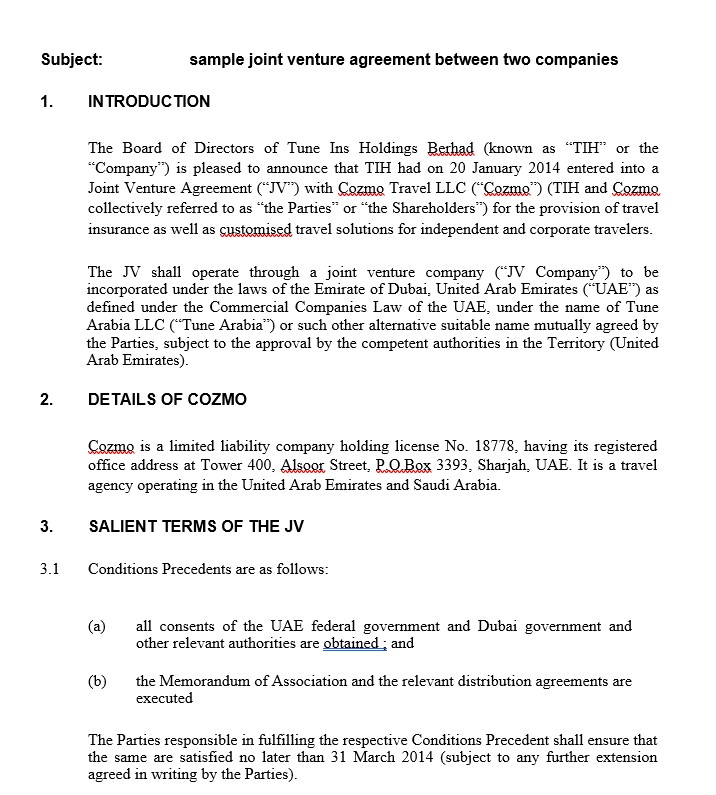
Why Is It Good?
- Easy to Use: It’s simple! Just add your info.
- Quick: You don’t have to start from the beginning. The main parts are already there.
- Safe: It uses words that make sure everyone is protected.
What’s Inside?
Inside, you’ll find parts like:
- Start: This tells who is working together and what the project is.
- Jobs: Who does what?
- Money Talk: How will you share the money you make or lose?
- Time: How long will you work together?
- The End: What if someone wants to stop working on the project?
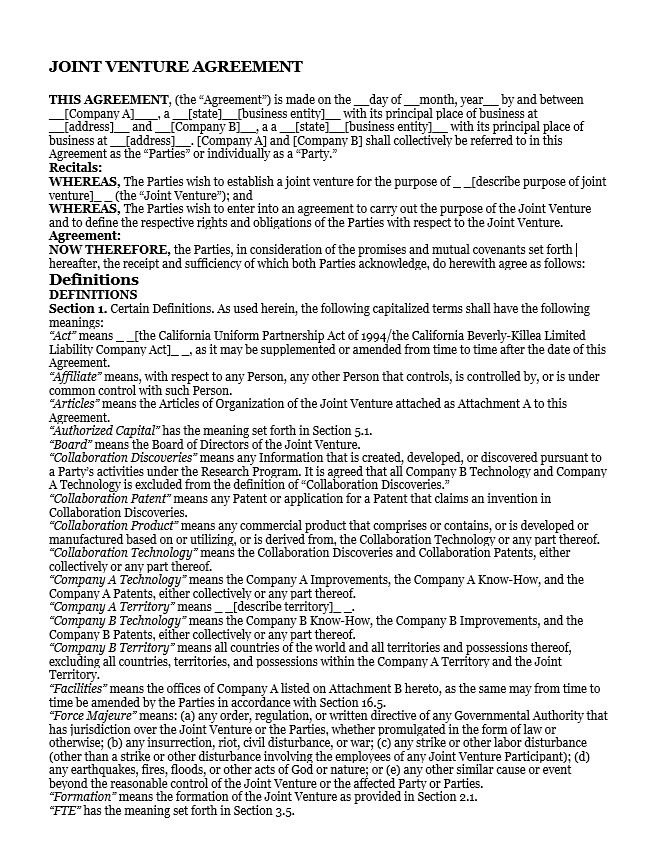
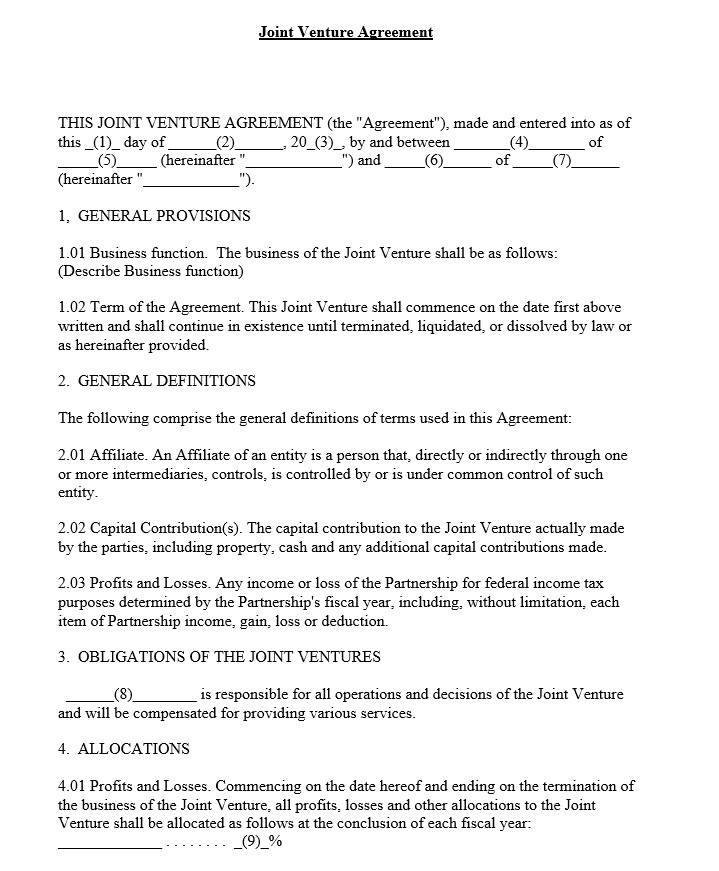
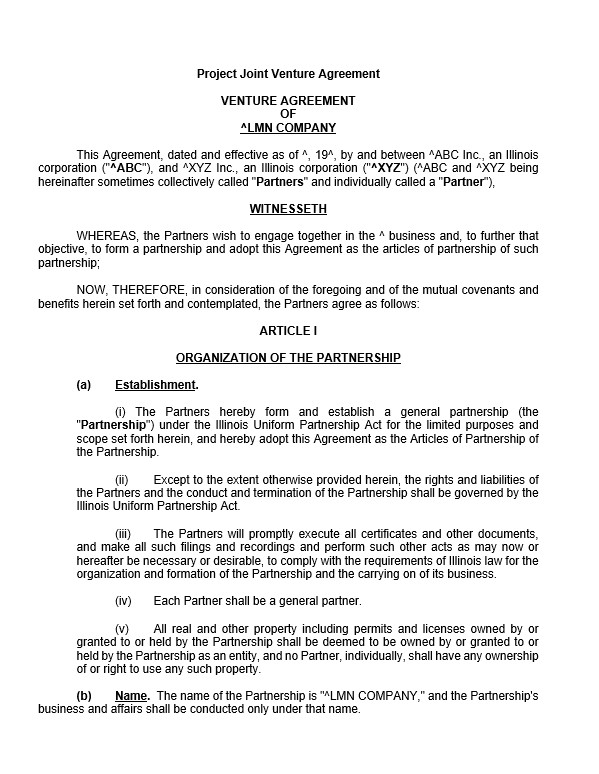
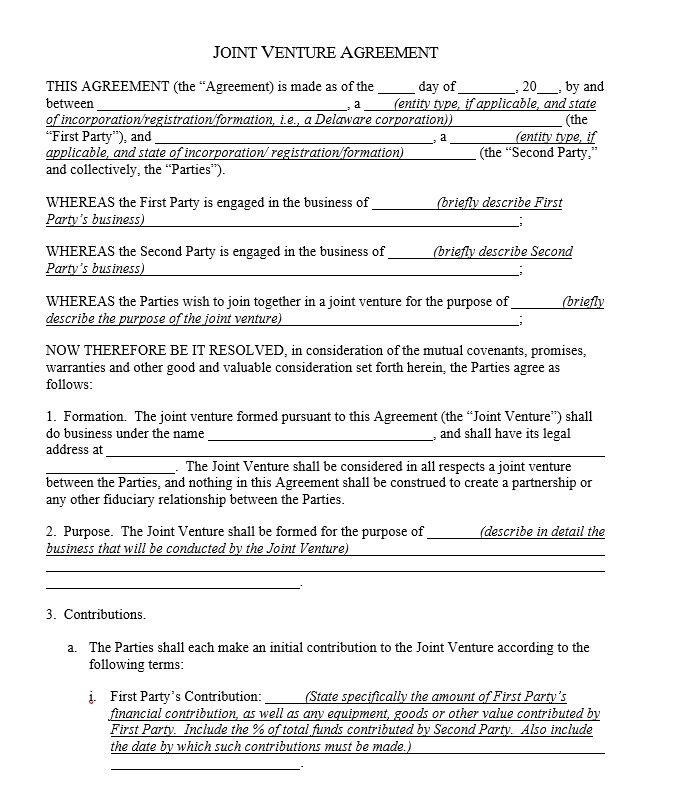
Case Studies
Company A and B: A Success Story
Companies A and B decided to team up for a new project. Company A had the tech skills, while Company B had the customer base. Together, they launched a new app that solved a big problem for many people. What’s the secret sauce to their success? They had a super clear Joint Venture Agreement that set rules for everyone. Plus, they checked in with each other a lot to make sure things were going smoothly. In the end, their project was a big hit, and they both made a lot of happy customers and money.
Business X and Y: A Cautionary Tale
Now, let’s talk about Business X and Y. They also had a Joint Venture Agreement, but things could have gone better. Why? Well, they only talked to each other a little and had different ideas about success. Plus, Business Y started using resources meant for the joint project on its own. That’s a big no-no! Ultimately, the project fell apart, and both businesses lost money and trust.
So, what can we learn from these stories? A Joint Venture Agreement is super important, but it’s just the first step. The real key is working well together to ensure everyone is happy and the project is a win-win.
Final Thoughts and Conclusion
Joining with another business can be a key to success. With the right agreement, you know what to expect and how to act. Be sure to complete the agreement if you’re considering a joint venture.
Additional Resources
- Download a Simple Joint Venture Agreement Template
- Read More on the Legal Aspects of Joint Ventures
Thanks for reading our guide! If you found it helpful, please share it with others who might benefit.
FAQs
What Happens if the Project Fails?
The Joint Venture Agreement often talks about what to do in that case. Usually, both companies share the burden. It’s like being on a team; you win and lose together.
How Long Does It Last?
A Joint Venture Agreement is often a short-term thing. When the project ends, the agreement does, too. So it’s not a forever deal, more like a temporary team-up!
Is It Legally Binding?
You bet it is! Once both companies sign the paper, it becomes a legal document. That means they could get in trouble if someone doesn’t do what they promised. It’s important to read everything carefully and talk to a lawyer before you sign.
Can Small Businesses Benefit?
Absolutely! Small businesses can get a big boost from teaming up with a larger company. It’s like a small fish getting help from a big fish. You can share resources, money, and even clients.
Do I Need a Lawyer?
It’s a smart idea to have a legal mind look things over. Lawyers know the rules and can help ensure the agreement is fair for everyone.
Can the Agreement Be Changed Later?
Yes, but only if everyone agrees. If both companies want to change something, they can. But it usually requires a new signature from both sides. Always good to double-check the rules!
What About International Joint Ventures?
Going global? Awesome! An International Joint Venture can help your company get known around the world. The different countries have different rules, which can be tricky.

The content creator team at calipsotree.com is dedicated to making topics accessible to everyone, with over 9 years of experience in writing and breaking down complex concepts into easy-to-understand articles that answer readers’ financial questions.






